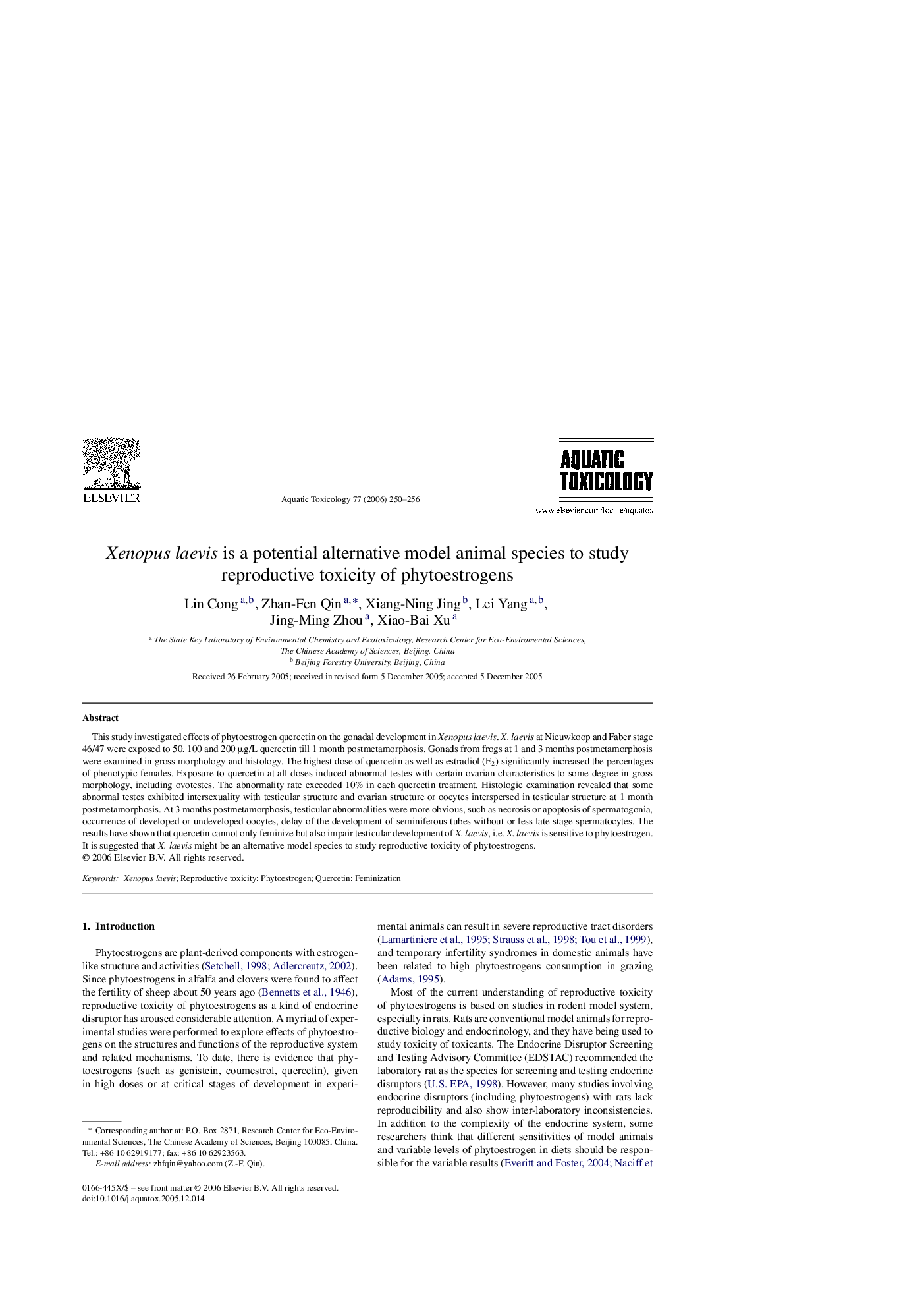| Article ID | Journal | Published Year | Pages | File Type |
|---|---|---|---|---|
| 4531391 | Aquatic Toxicology | 2006 | 7 Pages |
This study investigated effects of phytoestrogen quercetin on the gonadal development in Xenopus laevis. X. laevis at Nieuwkoop and Faber stage 46/47 were exposed to 50, 100 and 200 μg/L quercetin till 1 month postmetamorphosis. Gonads from frogs at 1 and 3 months postmetamorphosis were examined in gross morphology and histology. The highest dose of quercetin as well as estradiol (E2) significantly increased the percentages of phenotypic females. Exposure to quercetin at all doses induced abnormal testes with certain ovarian characteristics to some degree in gross morphology, including ovotestes. The abnormality rate exceeded 10% in each quercetin treatment. Histologic examination revealed that some abnormal testes exhibited intersexuality with testicular structure and ovarian structure or oocytes interspersed in testicular structure at 1 month postmetamorphosis. At 3 months postmetamorphosis, testicular abnormalities were more obvious, such as necrosis or apoptosis of spermatogonia, occurrence of developed or undeveloped oocytes, delay of the development of seminiferous tubes without or less late stage spermatocytes. The results have shown that quercetin cannot only feminize but also impair testicular development of X. laevis, i.e. X. laevis is sensitive to phytoestrogen. It is suggested that X. laevis might be an alternative model species to study reproductive toxicity of phytoestrogens.
